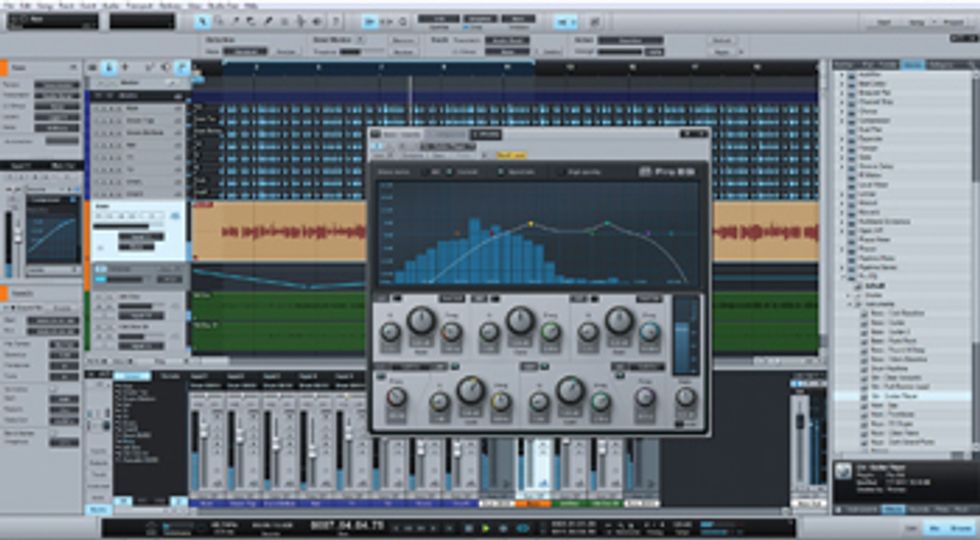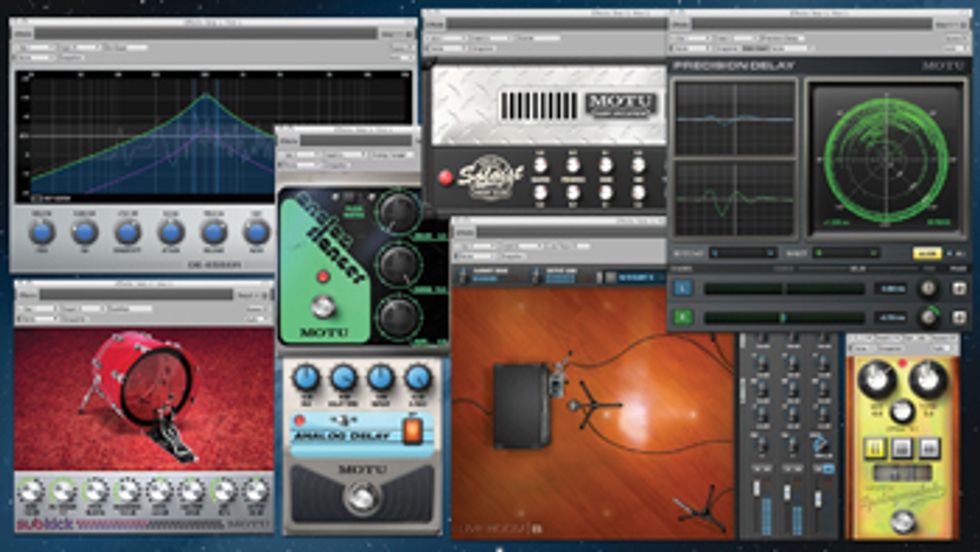Where do things stand with the current crop of top DAWs?

PreSonus Studio One 2.5 is the “youngest” DAW on our list, yet even it is considered a mature piece of software.

MOTU’s Digital Performer DAW has long been a Mac-only product, but is now Windows compatible.
Most of us base our studios around digital audio workstations (DAWs) running as software on Macs and PCs. So when a new version of our DAW of choice is released, it’s big news. New versions mean new features, new capabilities, and, potentially, a new learning curve. Fortunately, the major DAWs are all mature pieces of software that have been around for quite awhile. Even the new kid on the block—PreSonus Studio One—is now a few years old and well into its second version. Not only that, it was designed by a programmer with a huge amount of experience from previously working on a successful DAW for another company. So where do things stand with the current crop of top DAWs? Here’s a quick rundown.
Avid Pro Tools 11
The big dog in the DAW world has made a
major move with Pro Tools 11. The spotlight
change is the move to 64-bit support (64-bit
referring to how the software uses computer
resources such as memory, not how
it handles audio). This is a big deal. In fact,
there are many changes under the hood of
Pro Tools 11 that promise greatly enhanced
performance. This version does mark the end
of the line for Avid’s older plug-in formats
because Pro Tools 11 only supports AAX
format plug-ins. Fortunately, if you still
need access to your older plug-ins, Pro Tools
11 includes a “co-install” for Pro Tools 10,
which still supports RTAS format.
Propellerhead Reason 7
Among the newest releases in our tour is
Reason 7, having just been released as I’m
writing this column. Reason offers a very
powerful environment for music creation, with
racks of effects, synths, drum machines, loop
players, and samplers, as well as a mixer modeled
on a million-dollar SSL console. Reason
7 brings new features such as audio quantizing
(time correction), easier mixer routings,
a new Spectrum EQ, the Audiomatic Retro
Transformer for adding personality to tracks,
and the ability to drive external MIDI hardware
devices from within Reason.
Steinberg Cubase 7
Cubase 7 ups the ante with a new, friendlier
mix console with integrated equalizers
and dynamics processing (compressor, gate,
etc.). There are 66 new processors included,
along with eight virtual instruments boasting more than 2,800 sounds. The new
Chord Track feature helps with composition,
songwriting, and arranging. Other
powerful new features include VariAudio
2.0, which can be used to instantly create
complex harmony parts. There are also tons
of workflow improvements, designed to
make music creation easier and faster.
MOTU Digital Performer 8
The major news in this version of Digital
Performer is Windows support. A Maconly
piece of software from birth, Digital
Performer now jumps the chasm over to the
PC world. Digital Performer is also 64-bit
compatible on both platforms, optimizing
the use of computer resources. And Digital
Performer 8 comes bundled with powerful
new virtual instruments and plug-ins. A
cool one in particular is a modeled spring
reverb called “Springamabob.”
Ableton Live 9
Live has always been popular with the
loop-based crowd, but with this new version,
it moves even more solidly into the
studio DAW camp. Among the powerful
new features is audio-to-MIDI conversion,
which allows you to play a part on your
guitar, convert it to MIDI, and then use
it to drive a synthesizer sound—no special
pickup required. You can even convert beat-boxing
into drum parts. Other new features
include a redesigned browser for finding
content, automation enhancements, and a
new library of content.
PreSonus Studio One 2.5
The latest version of Studio One includes
more than 100 enhancements, including all
new plug-ins. One example is Ampire XT,
an amp/effects/cabinet modeling plug-in.
Transient Detection allows you to quantize
(time correct) multitrack drum parts. And
Celemony’s amazing Melodyne is built-in,
so you also have pitch correction available.
PreSonus Exchange is an available
free service/feature that lets you share and
download content—such as effects chains,
presets, soundsets, and more—with other
users. Automation has been improved, and
there are new file export options.
Cakewalk Sonar X2
With Digital Performer’s move to Windows,
Sonar remains one of the only DAWs that support just one platform—Windows, in this
case. The advantage to that is that Sonar is
optimized for Windows, and with Windows
8 it gains some neat new features, such as support
for large, multi-gesture touch screens. The
Skylight user interface has been revamped,
and there are many new enhancements, plugins,
and instruments. This is a big update
for Sonar, and this latest version no longer
supports Windows XP or Vista. You’ll need
Windows 7 or Windows 8 to run the software.
This is not a comprehensive list of DAWs, but the good news is there are so many options that can be used to create a professional production, from basic demos to full-on, major-label releases. Should you jump ship from your current DAW to one of these shiny new releases? If your current DAW is doing the job, then you may be happiest (and have the shortest learning curve) by simply updating to a new version. However, if one of the others has features you need or want, then it may be time to make a change. Fortunately, most DAWs offer trial versions, and the affordably priced “competitive upgrade” offers may entice you from one program to another.
 Mitch Gallagher's latest book is
Guitar Tone: Pursuing the Ultimate Guitar
Sound. He is the former Editor in Chief of
EQ magazine. In addition to being a writer,
he is a freelance recording engineer/producer/mastering engineer, teaches music
business and audio recording at Indiana
University/Purdue University, and is Sweetwater’s Editorial
Director. mitchgallagher.com.
Mitch Gallagher's latest book is
Guitar Tone: Pursuing the Ultimate Guitar
Sound. He is the former Editor in Chief of
EQ magazine. In addition to being a writer,
he is a freelance recording engineer/producer/mastering engineer, teaches music
business and audio recording at Indiana
University/Purdue University, and is Sweetwater’s Editorial
Director. mitchgallagher.com.